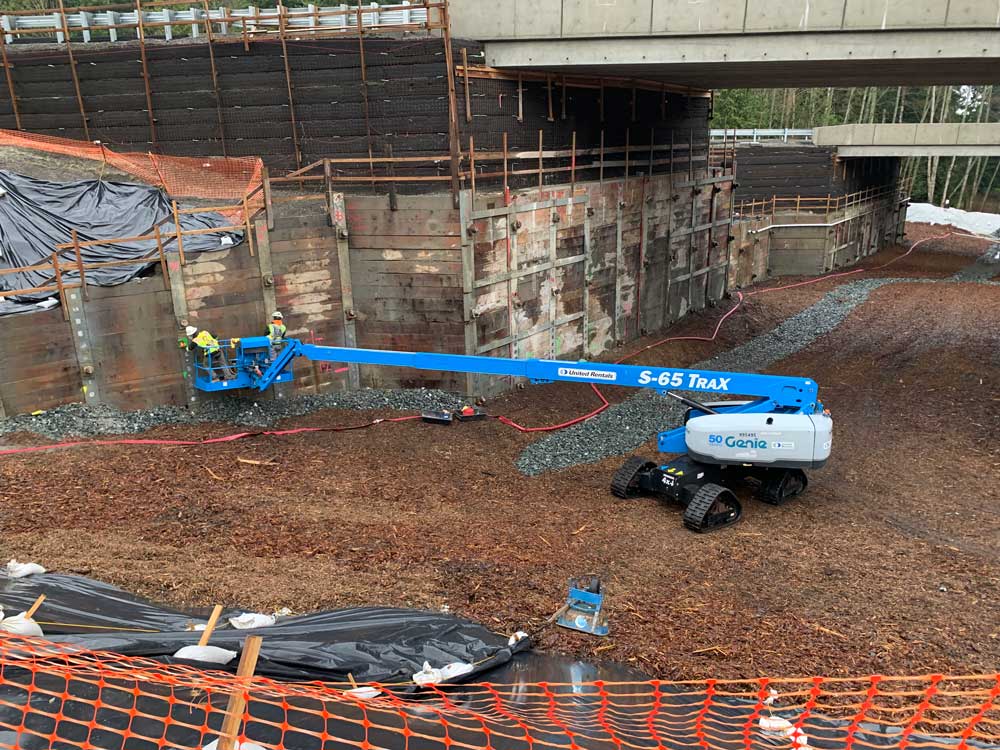Boom Lift Tires vs. Tracks: Which is Right for You?
by Sean Larin - Product Manager On Apr 24, 2023, 01:00 AM
Subscribe To Aerial Pros
Filter by tags
When it’s time for your next boom lift — whether you’re renting or buying — you may be inclined to quickly select the most appropriate wheeled model. After all, wheeled boom lifts dominate the market. But in recent years you may have noticed that more and more tracked models are showing up on a range of worksites. That’s because there’s growing awareness that tracks can offer performance advantages over wheels in certain situations.
How do you know when to select wheeled boom lifts or tracked boom lifts? These tips can help you make the right choice.
Operating Conditions
The two things that matter most when choosing between tires and tracks are ground surface and ground condition. Ground surface refers to the actual material you’re on — sand, gravel, pavement, snow and so on. Ground condition refers to the ability of the ground to support your equipment, and it’s often dependent on the weather and time of year. Think frozen, muddy or slippery conditions.
In many instances, tires are adequate, but in some scenarios tracks will offer more traction, provide less ground disturbance and make for a more productive day.
For example, let’s say you need a boom lift to service a telecommunications tower. These towers are often located on a hill or mountain and accessed via unpaved roads. In summertime, with dry and compact dirt on the road, wheeled lifts can get the job done just fine.
But during the harsh winter or spring thaw, you’ll likely encounter frozen, semi-frozen or muddy terrain to the extent that you need lower ground pressure. In these scenarios, tracks are the better option because they offer broader weight distribution for better traction and stability.
Imagine if that tower goes down in heavy snow. A wheeled machine likely won’t be able to get in and out without improvised cribbing — putting boards or mats down to give the machine the traction it needs to access the site. That’s a lot of extra work (and cost). With a tracked machine, cribbing wouldn’t be necessary.
When to Select Tracked Boom Lifts
That’s only one scenario when a tracked boom lift is a better option over wheels. Here are some others:
Gravel and fine sand — Because of their broader weight distribution, tracks should be the choice for these surfaces, which can be found in sand and gravel pits, oil and gas sites and elsewhere.
Rough, unfinished environments — For example, a construction site that’s not graded and leveled. Tracks are great at climbing up and over obstacles. Genie tracked boom lifts are particularly good because they feature our TraX™ independent four-point system — each track can independently operate, so they individually grip and climb over obstacles. The skid steer-style tracks some brands offer — with a single, full-length track on each side of the machine — don’t go over rough, uneven environments nearly as well, and the machine will rock more.
Slopes on rough, hilly terrain — Genie tracked machines offer great gradeability (40-45% depending on the model). Remember, this is with the boom in a stowed position. Any time you’re elevated, you need to be on firm, level ground.
Pavement is the surface that I definitely recommend against using tracks. Pavement will wear tracks more than it does tires. Oftentimes a tracked machine will be unloaded on pavement and moved to an unpaved area, which is fine — but if it’s a jobsite on a finished slab, use a wheeled machine.
Financial Considerations of Tires vs. Tracks
Simply put, tracks are more costly to maintain — it’s a more complicated system with more components than wheels. This is typically true for other types of equipment too, such as excavators and tractors. Here at Genie, which has the industry’s largest lineup of tracked boom lifts, we are designing our next generation of tracked machines to make maintenance faster and less expensive.
The purchase price of tracked machines also tends to be higher. That’s one of the reasons they haven’t been as common as wheeled machines. However, as I’ve laid out here, there are many applications where tracked boom lifts can improve productivity and efficiency, and more and more customers are realizing they make financial sense in these situations.
If you’re a rental house, it’s also important to be sure that you have the right fleet mix for your customers. With the use of tracked boom lifts trending upward among end users, that includes having different sizes of these machines available. Tracked lifts are problem solvers for your customers, and they offer good rental return rates for you.
The Final Verdict
When it comes time to select a boom lift for an upcoming job, be sure to first consider the ground surface and conditions the machine will be used in. From there, determine how often tracks will be needed to get your jobs done. While tracks cost more, in many situations, it’s worth the investment.
If you have questions or need advice on the best configuration for your type of work, please contact us so we can help ensure you get exactly what you need.


